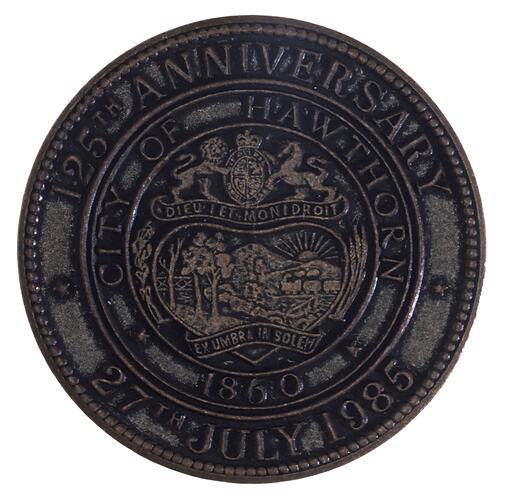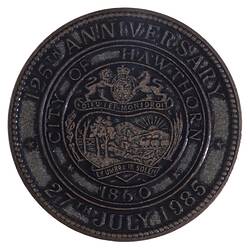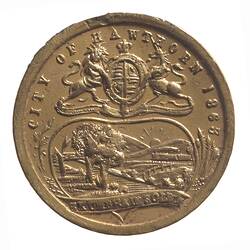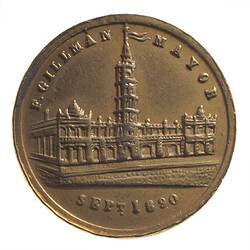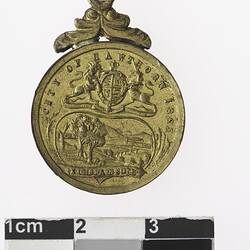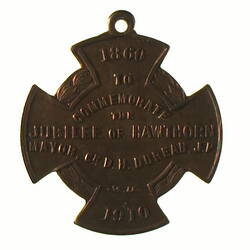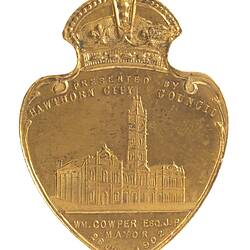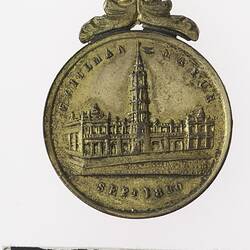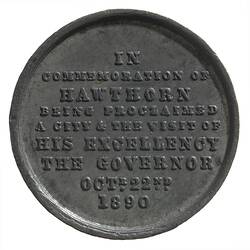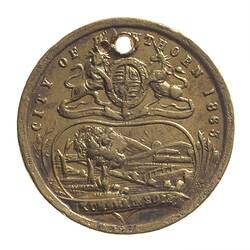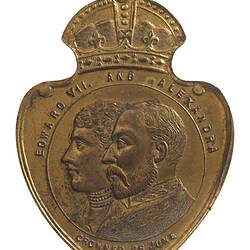Hawthorn is a 'middle-ring' residential suburb 6 km east of Melbourne. It rises east of the Yarra River valley, with Gardiners Creek on its south boundary. The municipality of Hawthorn (1860-1994) was bounded by Burke Road to the east and Barkers Road to the north.
The Hawthorn township was surveyed in 1837 to 1843, and farm-size allotments were sold. A bridge was built over the Yarra River in 1851, and in 1852 the homestead 'Invergowrie' was built on a knoll overlooking a bend in the Yarra River. (In 1871 this land was subdivided by the theatrical entrepreneur, George Coppin). A prominent Gothic Revival Christ Church was built in 1853, the same year that the Hawthorn primary school was built.
It is unclear how Hawthorn was given its name. Before 1860 the name had a 'e' on the end. Hawthorn/e may have been named after a visitor who called on Port Phillip senior surveyor Robert Hoddle, or settled on during a conversation between the owner of Burwood Park, James Palmer, and Governor LaTrobe, who thought that the native shrubs looked like flowering Hawthorn bushes. A bluestone house called 'The Hawthorns', built in Creswick Street in 1843, is also a contender.
Hotels were soon opened along Burwood Road, starting with the 'Hawthorne' at Barton Street in 1852. In 1861 the railway was extended from Burnley to Hawthorn. Market gardens and brick fields became established. In 1854 Hawthorn, along with Kew and Camberwell, became the Boroondara Road District, and in 1860 Hawthorn became a separate municipality. A medal issued to commemorate the Proclamation of the City of Hawthorn, however, cites the date 1863 (NU 33018). The first Presbyterian church in the Hawthorn area was built in Glenferrie Road in 1864, contributing to Hawthorn's pious skyline.
By 1865 Hawthorn's population was about 3,000 people. In the next two decades Upper Hawthorn, now Glenferrie, attracted houses and shopping. The railway was extended to this area in 1882 and a horse tram service in 1890, the year Hawthorn became a City. Hawthorn became increasingly middle class, and several private schools were established, but along Burwood Road a mixed retail and manufacturing area developed. Factories included carriage builders, wood turning and furniture, clothing and, most famous of all, Fowlers home bottling factory and warehouse. The housing stock in Hawthorn west and central was old and contained many cottages in a run-down condition.
During the inter-war years Hawthorn municipality's population grew from about 25,000 to about 40,000. Many large old houses were converted into rental flats. By 1981 over 45% of Hawthorn's housing stock comprised of flats, compared with 26% in Kew. Hawthorn's postwar population decline was nearly arrested by these flats, and despite them a preservation trend saw the survival of many old homes.
One 22 June, 1994, Hawthorn city was united with Camberwell and Kew cities to form Boroondara city.
Hawthorn issued medals for the Proclamation of the City of Hawthorn in 1890, for Edward VII's Coronation in 1902 and for its jubilee in 1910.
References:
Australian Places website http://arts.monash.edu/ncas/multimedia/gazetteer/list/hawthorn.html, Monash University, accessed 21/10/2003.
More Information
-
Keywords
-
Localities
-
Authors
-
Article types
